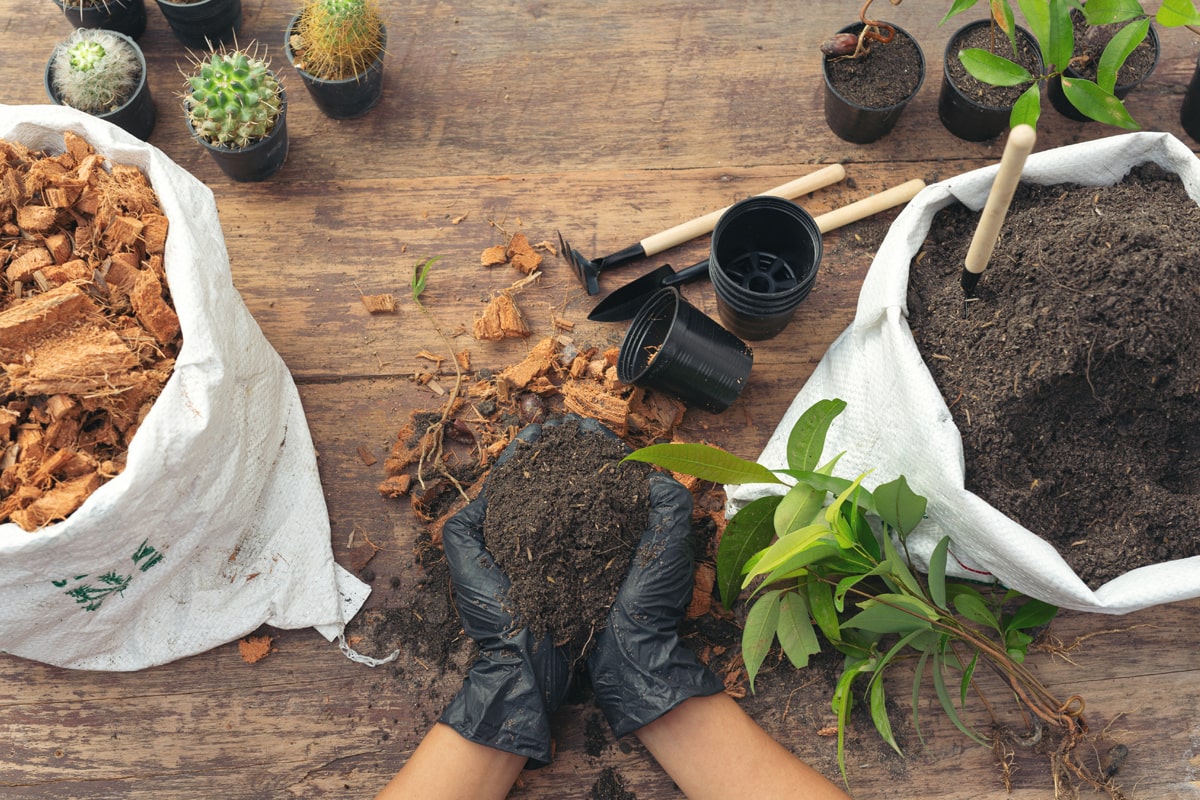Hapless soil is one of a home gardener’s biggest frustrations. Nothing seems to be growing or yielding bountifully.
Fortunately, improving soil quality at home isn’t too difficult. The first few steps are to get out there with a fork, some mulch and compost plus organic matter. You’re already well on your way to boosting your soil towards productivity.
What’s better is keeping your soil healthy. Here are fail-proof ways to maximize your garden soil and ensure an abundant home harvest.
Contents []
1. Clearly Define your Pathways and Beds
It’s often a mistake among home gardeners to walk on their soil. Foot traffic compresses soil. If there’s too much stepping on, it’s going to kill its tilth — otherwise known as the physical condition of the soil.
The trick is to clearly define your pathways and make your garden beds permanent. It creates boundaries between your walking and growing areas as well as keeps your soil from getting the beating. This is why we highly recommend using raised garden beds. It prevents you from stepping on your soil and keeps its productivity undisturbed.
Natural dividers such as woodchips, white clover or micro clover invites favorable insects to fertilize your soil.

2. Pick the Fork Over a Tiller
This is common advice that may do more harm than good when improving soil quality at home. Tilling works best for long-term growing among bigger farms where managing soil by hand can be tedious. Furthermore, tilling can often cause the soil to be blown away or be washed by rain.
A garden fork is much more beneficial in the long run for your home garden. It aerates the soil kindlier and loosens it up when you need to plant.

3. Put It On An Organic Diet
Much of the philosophy we live by in gardening is similar to how we live as humans. We require the right nutrition, proper shelter as well as the best possible care we can give ourselves.
Putting your soil on an organic diet is the best way to keep it healthy. A good mix of nitrogen-rich additives like well-matured manure and organic fertilizers is a good first step. Other ingredients like kitchen scraps, dried leaves and fallen debris are also key to good garden soil.
Knowing what to put in your soil is good. Knowing when to put it is better. Autumn is the best season to get to work. This helps prepare your soil to be as productive as it can be all year round. Just make sure to chop your organic material directly above your top soil about two inches. You can then cover it with mulch.

4. Recycle Perennials
If your garden boasts of fruit trees and woodlands, then you have plenty of organic material to improve your soil quality with. When you prune and trim for the winter, you have a wealth of perennial cuttings you can give your soil.
This beautiful recycle of recycling perennials makes for wonderful additive. Keeping natural cuttings also make your garden look more natural, like the way fallen leaves grace Mother Nature’s floors.

5. Allow your Soil to Dry
We can get very obsessive about keeping our soil wet. However, letting it dry makes more room for organisms to grow, and for the roots to thrive. Moreover, it welcomes air better.
An easy test is to pick up some soil and squeeze. If it’s still wet or moist, hold off for a few more days. Soil that also molds into a firm ball need to wait for a week or so too.
Remember these tips to improve your garden’s soil dramatically, and for a long run.



